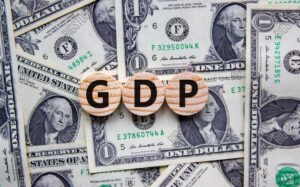Understanding the 2025 GDP Contraction and Its Market Impact
What Is GDP?
Gross Domestic Product (GDP) is a comprehensive measure of a country’s overall economic activity. It represents the total monetary value of all goods and services produced within a nation’s borders over a specific period, typically quarterly or annually. GDP serves as a critical indicator for policymakers, investors, and economists to assess an economy’s health and trajectory.
There are three primary approaches to calculating GDP:
- Production (or Output) Approach: Summing the value added at each production stage across all industries.
- Income Approach: Aggregating all incomes earned by individuals and businesses, including wages, profits, and taxes minus subsidies.
- Expenditure Approach: Adding up all expenditures made on final goods and services, including consumption, investment, government spending, and net exports (exports minus imports).
The expenditure approach is the most commonly used method and is calculated as:
GDP = C + I + G + (X – M)
Where:
C = Consumer spending
I = Investment by businesses
G = Government spending
X = Exports
M = Imports
A positive GDP growth rate indicates economic expansion, while a negative rate suggests contraction. Monitoring GDP trends helps stakeholders make informed decisions regarding fiscal policies, investments, and resource allocation.
Why Was GDP Low as Reported Today?
On April 30, 2025, the U.S. Department of Commerce reported that the nation’s GDP contracted by 0.3% in the first quarter, marking the first decline since early 2022. This downturn has raised concerns about the underlying factors contributing to the economic slowdown.
Surge in Imports Ahead of Tariffs
A significant driver of the GDP contraction was a 41.3% surge in imports, as businesses accelerated purchases to stockpile goods before implementing new tariffs under President Donald Trump’s administration. Since imports are subtracted in the GDP calculation, this surge negatively impacted the overall figure.
(Source)
Implementation of “Liberation Day” Tariffs
On April 2, 2025, President Trump announced sweeping tariffs on nearly all imported goods, a move he termed “Liberation Day.” These tariffs aimed to promote domestic manufacturing but led to increased costs for businesses and consumers, disrupting supply chains and economic stability.
(Source)
Decline in Government Spending and Consumer Confidence
Government expenditures decreased during the quarter, and consumer confidence reached its lowest level since 2020. Major corporations, including GM and Delta, withdrew financial guidance due to economic unpredictability, further dampening economic activity.
(Source)
Inflationary Pressures
The Personal Consumption Expenditures (PCE) price index, the Federal Reserve’s preferred inflation gauge, rose by 3.6%, exceeding the central bank’s 2% target. This uptick in inflation complicates monetary policy decisions and may hinder efforts to stimulate growth.
(Source)
How This Affected the Price Action in the Markets Today
The unexpected GDP contraction had immediate repercussions in financial markets. Major indices experienced significant declines as investors reacted to the economic data.
Stock Market Declines
- Dow Jones Industrial Average (DIA): Fell by over 700 points during the trading session.
- S&P 500 (SPY) and Nasdaq Composite (QQQ): Both dropped, with the Nasdaq losing more than 2%.
(Source)
Investor Sentiment and Volatility
The combination of declining GDP, rising inflation, and trade uncertainties led to increased market volatility. Investors sought safer assets, causing fluctuations in bond yields and commodity prices. The heightened uncertainty may lead to reduced capital expenditures and hiring in the coming months.
Currency and Commodity Markets
The U.S. dollar weakened against major currencies as confidence in the U.S. economy waned. Commodity prices, including oil and metals, also declined due to fears of reduced global demand stemming from the U.S. economic slowdown.
Conclusion
The recent GDP contraction underscores the fragility of the U.S. economy amid policy shifts and global uncertainties. While some underlying economic indicators remain resilient, the interplay of trade policies, inflation, and consumer sentiment presents challenges for sustained growth. Market participants will closely monitor upcoming economic data and policy decisions to gauge the trajectory of the economy in the coming quarters.
Related Articles from TraderInsight.com

